Different day at French Olympic Week
Published on April 26th, 2022
Hyères, France (April 26, 2022) – After yesterday’s blustery opening for the 53rd Semaine Olympique Française (French Olympic Week), winds moderated for day two, starting light and building steadily to steady 17-19-knot south-westerlies by the late afternoon.
Among the ten Olympic events, the skiff fleets are in an equipment transition and are not yet required to use the new class legal spars and sails. The clear leaders in 49er men’s qualifying fleets are both running old rigs for different reasons, and one major one that’s the same; reliability.
Last year the class announced a change from clear mylar sails to North Sails black 3di, and the accompanying new rig means a shallower spinnaker too. Time will tell if performance gains have been overblown.
Poland’s Dominik Buksak and Szymon Wierzbicki, the overall leaders, have gone back to their old mast and sails after issues with the new mast in the first race at Princess Sofia Regatta (Palma, Spain) in April cost them a place in the gold fleet. They had another strong day, that included a third race win and a lowest of fourth in six races over two days.
“We are sailing on the old mast and sails,” Wierzbicki said. “We tried the new ones in Palma, but it still wasn’t as strong for us as we need in windy conditions. We broke a spreader in the first race in Palma, so we lost two races at the beginning of the regatta and we didn’t manage to qualify for the gold fleet, so we said no more.”
Buksak added: “I think most of the fleet is using the old style mast, but many people are using the new style of sails. The masts are pretty similar, but in the new style masts all the fittings and spreaders and things can break.
“I think the new and old sails are very similar. I think there is not much difference, as we’ve seen in the racing today; we were sailing against the Danish (Frederik Rask/ Jakob Precht Jensen), they were really fast with the new sails, but not faster.”
In the other fleet, USA’s Nevin Snow and Mac Agnese have been almost equally as consistent, with a 1, 2, 3 in their three races today. Unsurprisingly, given it is their first regatta together in three years they are using their old gear.
“We’re happy to run the old stuff just because we know it’s reliable and it’s our first regatta in such a long time that we didn’t want to have to worry about anything extra or breakages,” Snow said. “It seems like there have been fewer breakages here.”
Added Agnese, “Nevin was sailing with somebody else before and I was down in New Zealand with American Magic (America’s Cup). We just got in the boat together again in December and have been doing a little bit of training in Miami here and there. We didn’t really come in with expectations but just to get a feel for racing again.”
49er FX
Norway’s Helene Noess & Marie Ronningen took the overall lead in style after winning the first three of the four races yesterday.
Nacra 17, learning to fly
Sometimes the performance gains have been immediately more obvious. There is a new craft in the Nacra 17 – in all senses. After a 2016 Olympic debut, in 2017, the Morrelli & Melvin-designed Nacra 17 evolved: the sporty catamaran abandoned its curved daggerboards for Z foils, and now this season, its rudders are equipped with wings, allowing it to fly at all angles.
Its hulls are now partly carbon and a lot of weight, around 22kg, has been added at the level of the foil well to be able to support all the extra force. The Nacra 17 is therefore totally flying and the first flying Olympic support.
“The contribution of foils is huge across the whole sport, it’s part of the evolution of sailing and half of the classes going to the Olympic Games have foils – it’s starting to become quite interesting,” said France’s Billy Besson (and Noa Ancian).
“On the first Nacra 17, we only had C foils, the boat was quite light and at the end of the Olympiad with Marie (Riou), we managed to make a flight of 25 seconds. The first evolution was to add real foils with rudders with wings that allowed you to fly downwind but not upwind.
“The latest development we have is a 4-degree differential on the rudders, which allows you to fly upwind: there is a rudder that pushes the boat up and a rudder that pulls down. Now the boats fly all the time from 10 knots of wind up.”
Italy’s Olympic champions, Ruggero Tita and Caterina Banti, lead overall after winning the fourth and last race of the day. That took them past Britain’s pair of John Gimson and Anna Burnet are second overall after a strong finish to the day in the bigger breeze.
Burnet said that even a few day training in Hyères had helped them bridge the speed gap. “The Italians and the Finnish were a lot quicker than us in Palma and were upwind foiling,” Burnet said. “But we have been trying to catch up and have managed more speed in just a few days training really.
“It’s just about learning about how to set the sails up, the technical side and then coordinating with the helm. It’s not like a Moth where it’s all done by one person, you have to coordinate.”
Men’s Formula Kite
France’s Alex Mazella and Singapore’s Maximilian Maeder continue to dominate their two fleets after 4 more races on Tuesday. Although Maeder slipped to second overall after picking up a big discard for not finishing race 8.
Women’s Formula Kite
After 4 more races and 8 in total, France’s Lauriane Nolot moved past USA’s five-time and reigning world champion, Daniela Moroz, at the top of the leaderboard. Moroz finished ninth in race 7.
Men’s iQFOiL
France’s Nicolas Goyard jumped into a commanding lead after winning all five races today as all his rivals faltered with heavy discards.
Women’s iQFOiL
Hélène Noesmoen was not quite as dominant as her compatriot and fellow World and European champion, winning only three of her five races. Her rivals look distant, but remain in touch, just.
ILCA 6
Agata Barwinska, made it a strong day for Poland’s sailors, as she held onto the overall lead despite finishing 17th in the second race of the day (Race 4). In two days of violently swinging results, nearly the whole leaderboard already have big discards.
ILCA 7
Australia’s Olympic champion, Matt Wearn, kept the overall lead by winning both his fleet races, but Germany’s 2020 World Champion, showed his class and form too, but winning both in his to move second overall.
Mixed 470
The 470 looks like being one of the most hotly contested classes in Hyères. Germany’s Luise Wanser and Philipp Autenrieth are edging the overall lead after winning both races in their fleet.
Event details – Results – Facebook
A field of 751 sailors from over 50 countries will compete at the 53rd Semaine Olympique Française (French Olympic Week) on April 25-30, 2022.
MORE: Among the North American contingent, Canadian Sarah Douglas slipped to fourth in the ILCA 6, with Mexico’s Mariana Aguilar Chavez Peon similarly dropping one position in the iQFoil (14th). For the US Team, the top performers are Daniela Moroz (2nd, Formula Kite), Nevin Snow/ Mac Agnese (2nd, 49er), and Steph Roble/ Maggie Shea (4th, 49erFX).


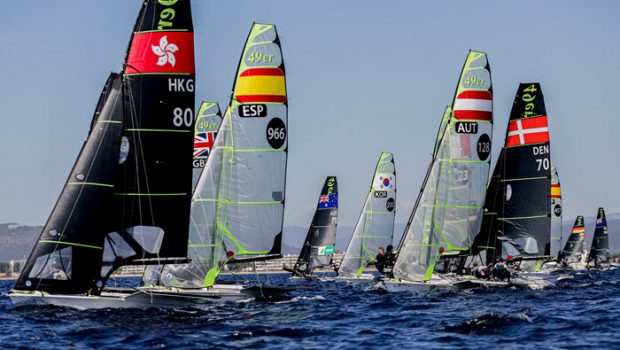


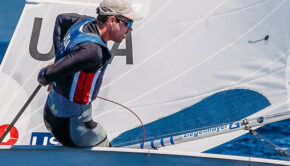
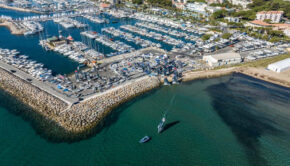
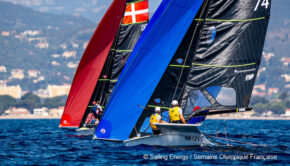
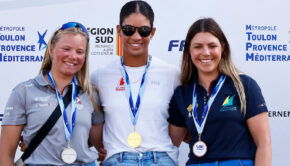
 We’ll keep your information safe.
We’ll keep your information safe.